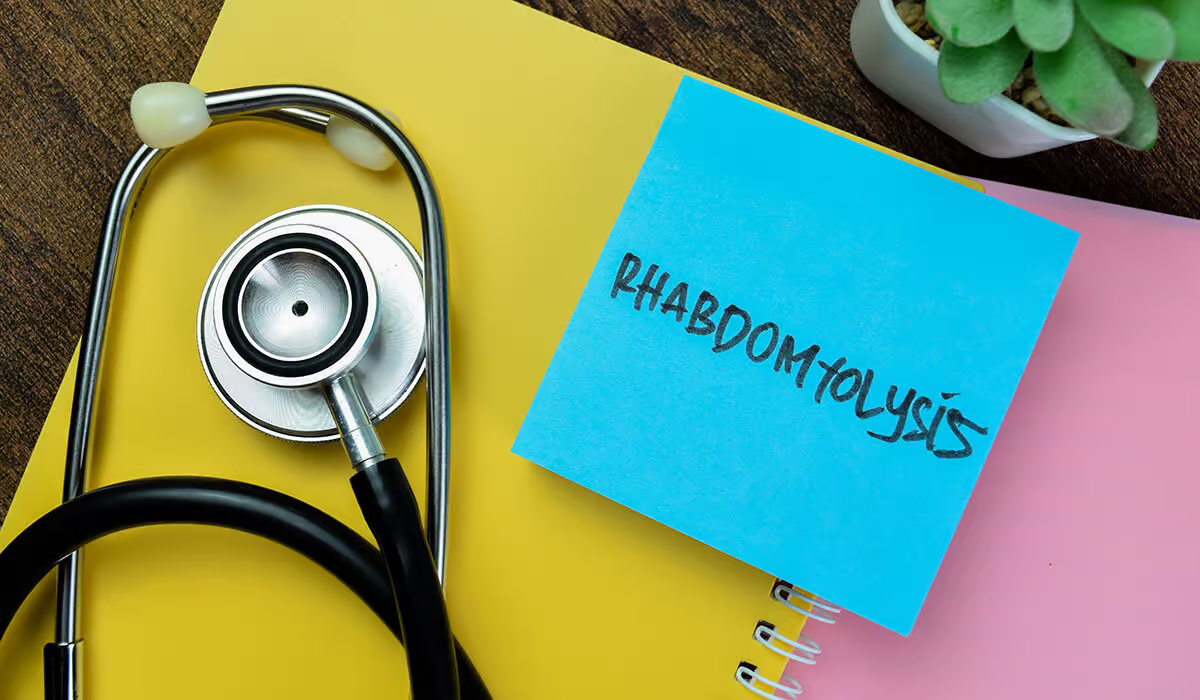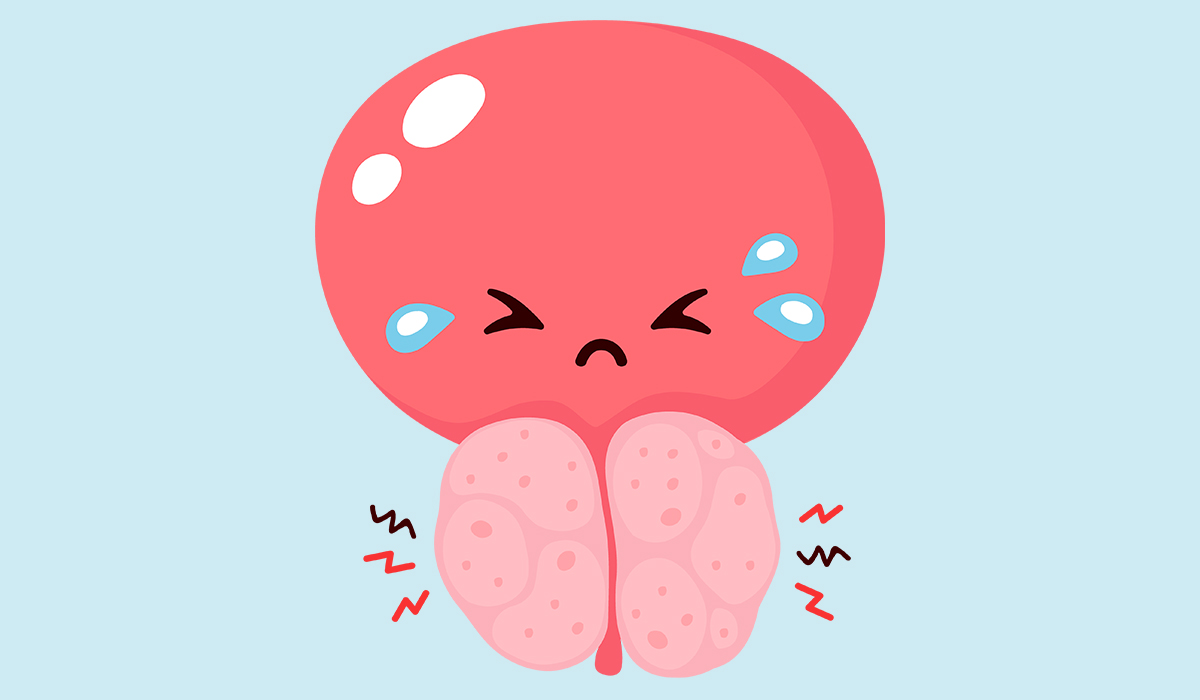The disease is either chronic or acute, depending on its duration. Inflammation can sometimes recur. Eye infections significantly worsen the quality of everyday life and sometimes even deteriorate proper vision. An eye doctor focuses on finding and caring for eye diseases.
Typical symptoms include red, painful, watery eyes and yellow discharge from an eye. However, symptoms may vary depending on the affected part of the eye. Viruses are usually responsible for pink eye, meaning antibiotics don’t help. If you experience an eye infection, it’s essential to consult a doctor since choosing the proper treatment is crucial to recovering and avoiding complications.
Eye inflammation can sometimes occur in newborns during the first days of life. That situation is a special kind of eye infection called neonatal conjunctivitis. The inflammation is then caused by bacteria acquired during childbirth.
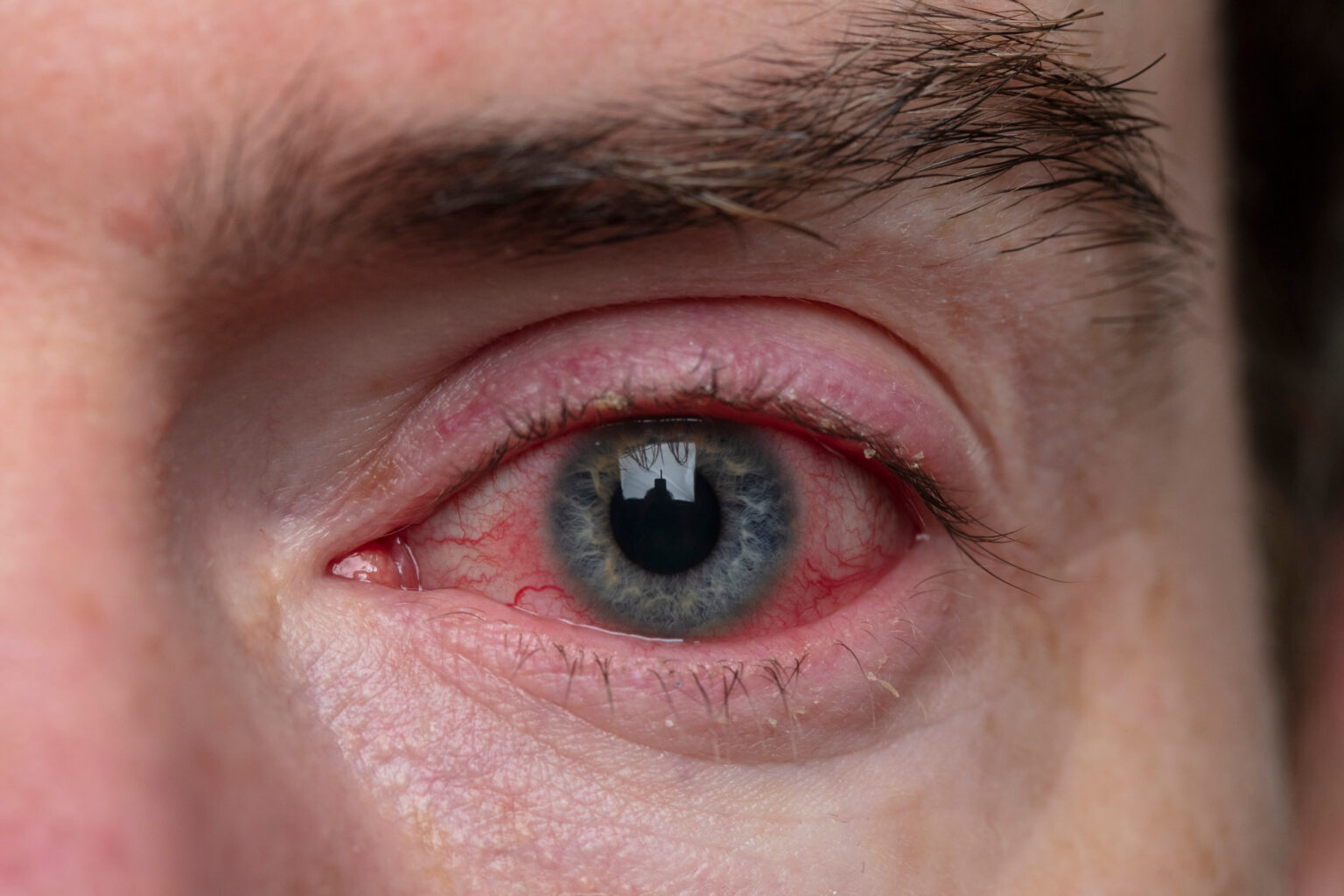
Causes
Microorganisms like bacteria, viruses, parasites, or fungi can cause eye infections. The most common factors are viruses, especially adenoviruses. However, symptoms of pink eye may also be caused by non-infectious factors such as allergies, irritation from cosmetics, or beauty procedures in the eye area.
Microorganisms can invade your eye in many ways, such as eye injury. It is easier to acquire an eye infection when some foreign body gets to the eye. Wearing contact lenses for longer than recommended also raises your chances of infection developing in the eye.
People with weakened immune systems and eye defects are much more susceptible to eye infections.
Bacteria
Bacteria are divided into two groups: gram-negative and gram-positive. Both kinds of bacteria can cause eye infections. Although viruses cause most infections, bacterial infections are more common among children. The most common bacteria include:
- Haemophilus influenza
- Staphylococcus aureus
- Streptococcus pneumoniae
- Neisseria gonorrhoeae
- Chlamydia trachomatis
- Pseudomonas aeruginosa
Bacterial eye infections are highly contagious and may affect one or both eyes.
Viruses
Viruses are the most common cause of eye infections among adults. Adenoviruses are the most frequent cause, but viruses such as herpes simplex 1 or varicella-zoster virus (VZV) may also be the reason.
Viral eye inflammation is contagious, and it should be remembered to take steps to prevent spreading it to others. It can spread through direct contact or by an object contaminated with infected eye discharge. When the eye is infected, it may be itchy, which triggers touching it, so you should wash your hands frequently when having an infection to avoid spreading the virus. Viral infections can affect one or both eyes.
Fungi
Fungal eye inflammations are extremely rare but may be severe. They typically cause keratitis (inflammation of the transparent front layer of the eye called the cornea) and endophthalmitis (infection of the inside of an eye).
Fungal infections usually result from eye injury, especially with plant material. Typical fungi that cause the condition include:
- Fusarium – a type of fungi that lives in the soil and plants
- Aspergillus – is a common fungus that causes mold
- Candida
Fungal infections are rare but happen more often in people with a weakened immune system, such as people with AIDS or after an organ transplant.
Types
There are several types of eye infections. Symptoms and their severity may be different for various kinds of conditions. Experts distinguish:
- Conjunctivitis (pink eye)
- Keratitis – Inflammation of the transparent layer in front of the eyes called cornea.
- Stye is an infection of the small glands near the eyelashes. It appears as a bump and swollen eyelid.
- Uveitis is an infection of the inside layer of an eye that is rich in blood vessels.
- Endophthalmitis is an inflammation inside the eye.
- Cellulitis is an inflammation of the tissue around the eye socket. Symptoms that may appear include bulging eyes, problems with eye movement, and blurry vision.
- Dacryocystitis is an inflammation of the tear ducts, the ducts that drain tears from your eye. When that part of the eye is infected, symptoms include excessive tearing and yellow discharge.
How Common Is It?
Eye inflammation is a common condition. The most common type is conjunctivitis. The disease is mainly viral among adults, whereas in children, most infections are bacterial. Infections are much more common in people who use contact lenses.
Symptoms
When you have eye inflammation, many symptoms may appear. Symptoms you may experience include:
- Red eyes
- Pain
- Excessive tearing
- Eye itching
- Eyelids swelling
- Discharge from an eye (usually yellow pus)
- Light sensitivity
- Blurred vision
- Flu-like symptoms, especially fever
- Sticky eyelashes
The symptoms may vary depending on the type of the condition.
Risk Factors
Some factors raise the chances of developing an eye infection. The risk factors include:
- Eye injury
- Eye surgery—Like every surgery, eye operations risk infection. Therefore, taking medications as prescribed after the procedure is crucial to avoid infection.
- Wearing contact lenses – Contact lenses raise the chances of getting keratitis (cornea infection). Therefore, not wearing them during sleep and proper hygiene while wearing and cleaning contact lenses is essential to avoid contact lens-related infection.
- Having contact with a person affected by the virus, bacteria, or fungi increases the chances of getting infected.
- Foreign bodies in the eye, especially soil or plants, may carry infection-causing germs. When these germs reach the eye, they may cause inflammation.
- Using infected towels or tissues
- Using eye makeup that is infected
- Not washing your hands
- Frequent touching eyes
- Having Sjogren’s syndrome, a condition in which eyes are chronically dry
- Having autoimmune diseases, such as rheumatoid arthritis or lupus
Diagnosis
It’s best to consult with a doctor when you suspect you might have an eye infection. Your GP should be able to diagnose your symptoms based on your examination and medical history. Sometimes, they may need to refer you to an eye doctor, especially if a more severe type of condition, such as keratitis or endophthalmitis, is suspected. Further tests are also needed if the condition recurs, and in babies.
Tests that may be performed for severe infection symptoms include:
- Slit lamp exam – That test uses a microscope with bright light to enable your eye doctor to take a closer look at your eye parts. It isn’t painful but may cause discomfort if you have light sensitivity.
- A swab of eye discharge—A discharge swab is rarely needed to determine which germ is causing your infection.
- Visual acuity test – A visual acuity test might be needed to determine if your condition deteriorates your vision. During that test, you are asked to read letters that gradually get smaller from a unique chart (Snellen chart). The test is performed for each eye separately.

Differential Diagnosis
Symptoms of eye infection are also common in non-infectious conditions. The difference is the causative agent—various microorganisms cause the condition in infections, but many other reasons may provoke similar symptoms.
Allergic conjunctivitis is an inflammation of the clear layer at the front of an eye caused by allergy to allergens. A characteristic symptom is conjunctival itching, red eyes, tearing, and swelling of the conjunctiva and eyelids. The basis of treatment is to avoid exposure to the allergen-causing symptoms and to use artificial tears. Your doctor may also prescribe anti-allergy drops or other eye drops.
Beauty products, such as mascara or eyeliner, may also cause allergies in the eye area. You can choose hypoallergic cosmetics if you have a history of allergic reactions to eye makeup products.
Nowadays, many beauty procedures are performed on the eye area. It’s essential to always stay safe while undergoing such procedures. Choose a trusted beautician at the salon who follows hygiene rules, uses professionally tested products, and sterilizes tools. For example, during eyelash extension removal, chemical agents used to remove eyelashes may irritate your eyes and cause inflammation, leading to vision problems and dry eyes.
Treatment
Treatment of infections depends on their cause. Medications that may be used include:
- Antibiotics in various forms, including eye drops, tablets, and ointments
- Fungal infections are treated with anti-fungal medications
- Anti-inflammatory medications, such as some over-the-counter NSAIDs like ibuprofen
- Lubricating eye drops – You can use some OTC artificial tears
It’s important to remember that antibiotics take 1-2 days to start working. Therefore, you may not feel better immediately. Use some OTC painkillers to manage eye pain. Most viral pink eye must heal independently, as antibiotics don’t work on viruses. It should pass within 1-2 weeks. If you experience sticky eyelashes from the eye discharge, use a warm washcloth to loosen the dried mucous.
Remember not to wear contact lenses until the infection is fully healed. Viruses and bacteria spread quickly, so take care of hygiene to avoid spreading them to the other eye or other people. Wash your hands often, especially before and after touching your eyes.

Complications
Eye infections can sometimes lead to complications. Especially if it’s severe or caused by an atypical germ. The most common complications of eye inflammation include:
- Scars forming at the conjunctiva
- Bacterial superinfection occurs after viral infections
- Long-lasting or recurring infections
- Ulcers (sores) at the front layers of an eye
- Dry eyes
- Vision deterioration
However, most eye infections, especially viral ones, pass without leaving any long-lasting complications. Contact your doctor if your symptoms are particularly severe or the condition doesn’t pass.
Prevention
Not all eye infections can be prevented. However, there are some steps you can take to limit your chances of getting it. Those include:
- Don’t touch your eyes with your hands
- Use clean washcloths and towels
- Change your pillowcase frequently
- Don’t borrow eye cosmetics, such as mascara
- Wash your hands often
- Avoid people with infections
- When you develop an eye infection, throw away eye cosmetics that may have been contaminated to avoid re-infection
If you wear contact lenses, the chances of eye infection are much higher than in people who do not use them. Experts distinguish some rules to be followed while using contact lenses that protect you from infections:
- Don’t sleep in your contact lenses
- Replace your contact lens case at least thrice yearly.
- Rub your lenses while cleaning them—Studies prove that rubbing contact lenses is one of the best ways to eliminate the bacteria that builds up on them.
- Use a store-bought solution to rinse and store contact lenses. Homemade solutions may not protect well enough from bacteria and other microorganisms.
- Replace your contact lenses with new ones regularly. Use your contact lenses only as long as the producer recommends, and don’t try to exceed their expiration date.
When Should You See a Doctor?
You should see a doctor if you notice any symptoms of an eye infection, including red eyes, itching, pain, blurred vision, eye discharge, sensitivity to light, or excessive tearing.
Your GP is the first doctor who can determine the diagnosis and treatment plan. If the condition is severe or a further diagnosis is necessary, they will probably refer you to an eye doctor—physicians who treat eye diseases are called ophthalmologists.
If you wear contact lenses, discontinue wearing them as soon as you notice symptoms of infection.
Sources
- American Academy of Opthalmology (AAO) Eye Infections From Contact Lenses (2023) https://www.aao.org/eye-health/diseases/contact-lens-related-eye-infections
- American Academy of Opthalmology (AAO) Ophthalmologic Manifestations of Autoimmune Diseases (2024)
https://eyewiki.aao.org/Ophthalmologic_Manifestations_of_Autoimmune_Diseases - Centers for Disease Control and Prevention (CDC) Fungal Eye Infections Basics (2024) https://www.cdc.gov/fungal-eye-infections/about/index.html
- Watson S, Cabrera-Aguas M, Khoo P. Common eye infections. Aust Prescr. 2018 Jun;41(3):67-72. doi: 10.18773/austprescr.2018.016. Epub 2018 Jun 1. PMID: 29922000; PMCID: PMC6003010. https://www.ncbi.nlm.nih.gov/pmc/articles/PMC6003010/
- Sharma S. Diagnosis of infectious diseases of the eye. Eye (Lond). 2012 Feb;26(2):177-84. doi: 10.1038/eye.2011.275. Epub 2011 Nov 18. PMID: 22094299; PMCID: PMC3272189. https://www.ncbi.nlm.nih.gov/pmc/articles/PMC3272189/
- Moshirfar M, Masud M, Shah TJ, Avila MR, Hoopes PC Sr. Chemical conjunctivitis and diffuse lamellar keratitis after removal of eyelash extensions. Am J Ophthalmol Case Rep. 2018 Aug 4;12:21-23. doi: 10.1016/j.ajoc.2018.07.007. PMID: 30128373; PMCID: PMC6098230. https://www.ncbi.nlm.nih.gov/pmc/articles/PMC6098230/
- Norris MR, Bielory L. Cosmetics and ocular allergy. Curr Opin Allergy Clin Immunol. 2018 Oct;18(5):404-410. doi: 10.1097/ACI.0000000000000474. PMID: 30020255. https://pubmed.ncbi.nlm.nih.gov/30020255/
- American Academy of Opthalmology (AAO) Quick Home Remedies for Pink Eye (2023)
https://www.aao.org/eye-health/diseases/pink-eye-quick-home-remedies





